8 Iconic Cell Phone Designs From the Early 2000s
The year was 1983, and Motorola had just delivered the world’s first cell phone, the DynaTAC 8000x. Sure, the device cost $4,000 (about $10,000 today), weighed 1.75 pounds, was 13 inches long, and only provided about 30 minutes of talk time, but it was a technological breakthrough. Nearly 40 years later, cell phones are one of the most ubiquitous devices on earth: it’s estimated that some 5 billion of the world’s 7.7 billion people own mobile phones. And while today’s smartphones are some of the most powerful devices in the world, we’re captivated by the golden age of cell phones—the early aughts.
In the first decade of the new millennium, cell phones hit the mainstream for the first time, and numerous companies battled to create the next must-have accessory. Their designs were avant-garde, and became quickly intertwined with pop culture of the time—Paris Hilton is best remembered from that era clutching one of her dogs and a cell phone. And despite smartphones being as popular as they are today, there’s even a nostalgic trend to return to the flip or slider phones of the early 2000s. “The phone today has too many functions, too many apps, and now too many photo options. Some people who do not use most of these features want it to be just a phone,” Constantin Boym, Pratt Institute’s chair of industrial design, tells AD. “This goes hand in hand with reducing technology-based stress in our lives with a turn to bicycles, slow cooking, yoga, healthy options in food.” Will we all go back to texting via T9? We’re not so convinced. But we’re all for a nostalgic blast from the past—check out eight of the most iconic cell phone designs from 2000 to 2009.
Nokia 3310
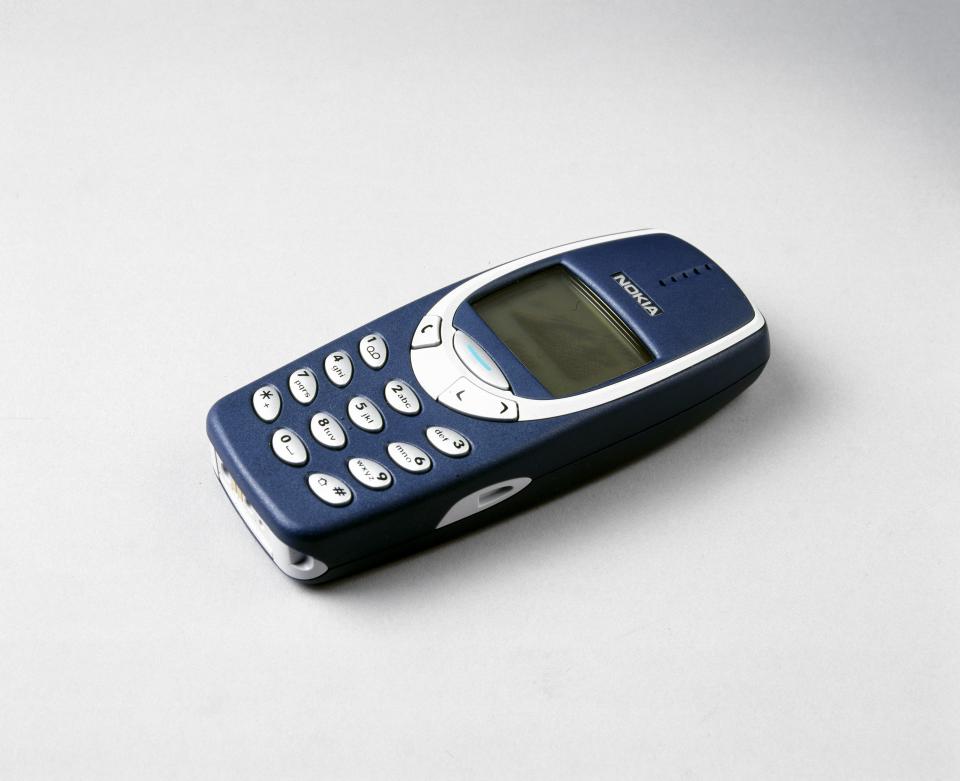
Nokia 3310 mobile phone, 2000.
Photo by Science & Society Picture Library. Image courtesy of Getty Images.Between the time this old-school device debuted in 2000 and its retirement in 2005, 126 million units were sold around the world, making this one of the most successful cell phones of all time. Finnish company Nokia went with a simple, streamlined designed—how Scandinavian of them—and built the phone to last. In fact, the Nokia 3310 is regarded as one of the most durable cell phones out there. The phone was resurrected in 2017 with a modernized design that comes in four colors. The best part of this new analog cell phone? Its battery lasts a full month on standby mode.
Danger Hiptop/T-Mobile Sidekick
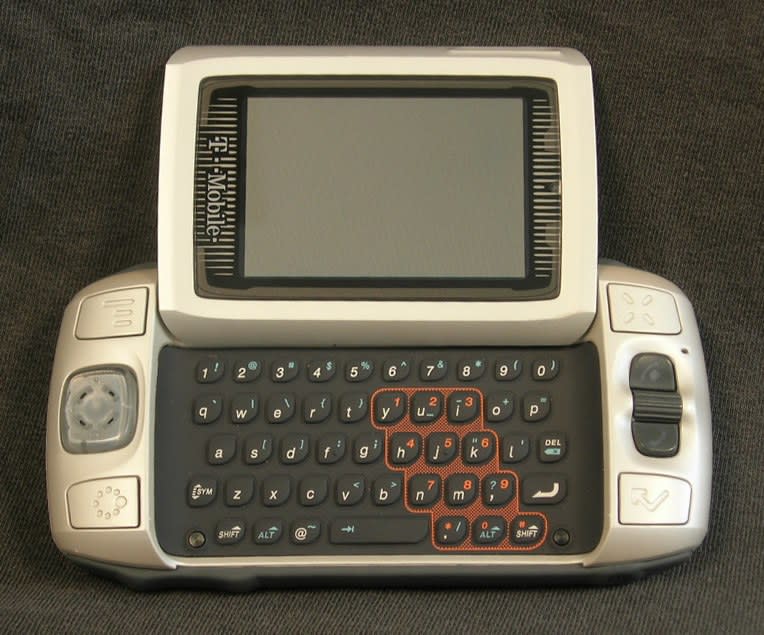
Most teens and young adults in the 2000s will remember the Sidekick, one of the It phones of the decade, notable for its QWERTY keyboard revealed by a sliding screen. It was not the first cell phone with a full keyboard—that distinction goes to the Nokia Communicator 9000, which launched in 1996, six years prior to the Sidekick—but the Sidekick was certainly one of the most popular. The phone was originally designed and produced by the now-defunct company Danger, Inc., which named the product Hiptop, though it underwent a rebranding by T-Mobile to become the Sidekick.
Motorola RAZR
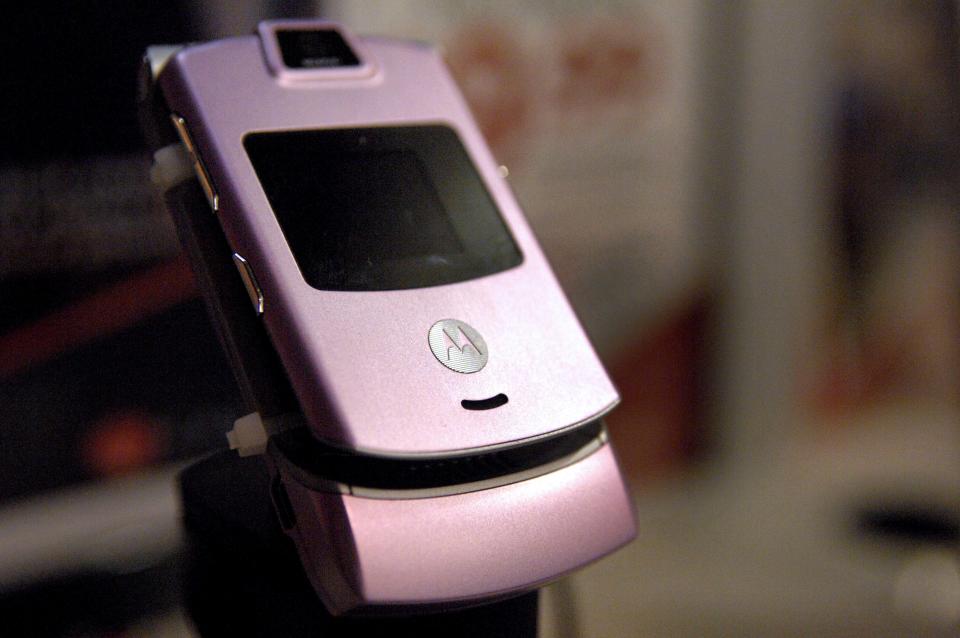
A Motorola RAZR phone sits on display at a Best Buy store in
Photo by Bloomberg. Image courtesy of Getty Images.Perhaps the first cell phone to go “viral,” if you will, was the Motorola RAZR, which hit the market in 2004. “In 2003, Motorola set out with a goal of making a device that could easily fit into your pocket. This focus on thinness caused us to cut the device’s thickness in half and entirely rethink how to design and architect a phone,” says Paul Pierce, executive director at Motorola Mobility, who was part of the original RAZR team. “As a result, some of RAZR’s most iconic design features—ultrathin backlit keypad, distinguished chin, metallic finish—came to life by truly innovating around a sleek design.” The brand then started offering the phone in multiple colors, making it a fashion accessory, and eventually going on to partner with Dolce & Gabanna on a limited edition model. “What started as innovation grew into a cultural icon and transformed technology into fashion for the first time ever,” says Pierce. The RAZR has even made a comeback—a new “foldable” model with a bendable touchscreen within a clamshell (or flip phone) design was recently released.
Sony Ericsson W800i
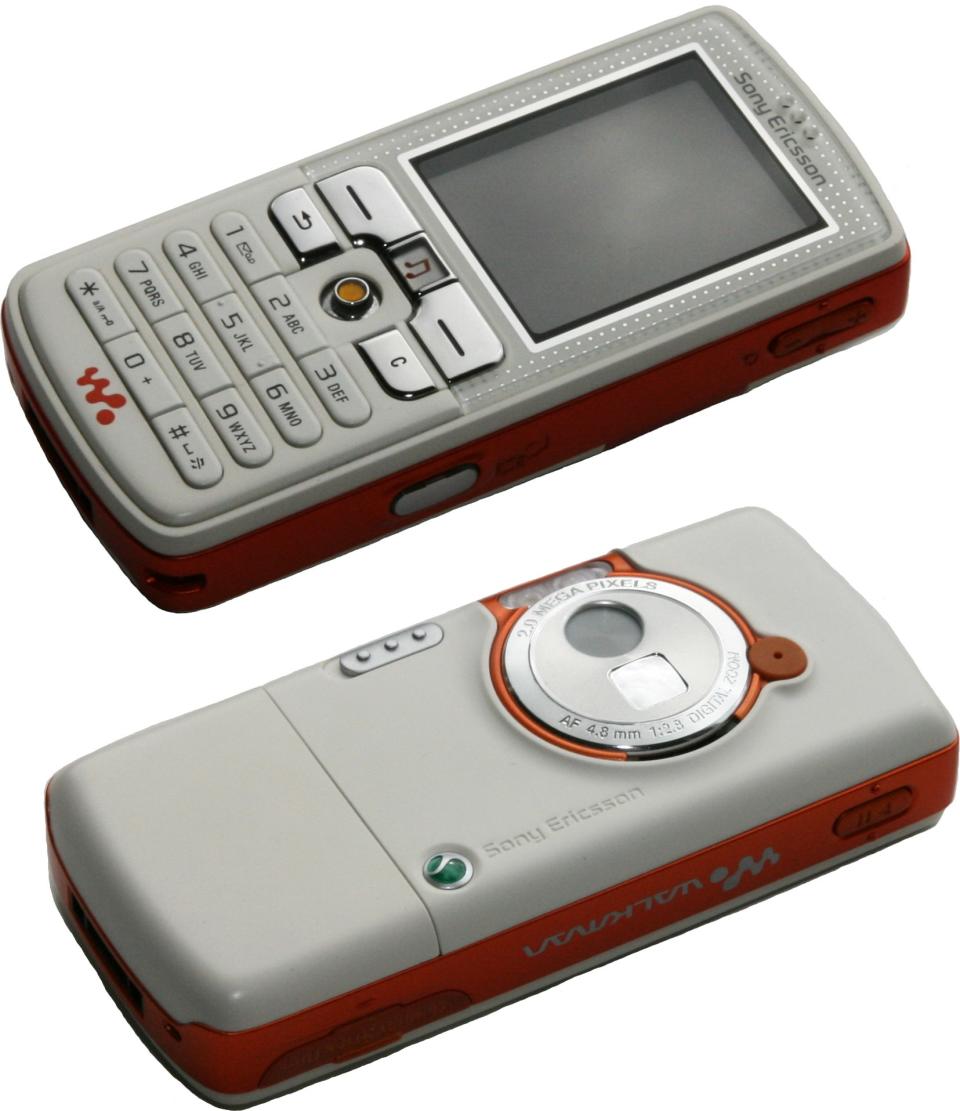
Even though the Sony Ericsson W800i, introduced in 2005, was not the most popular cell phone of the decade, it was a significant one, as it was one of the first to consider a cell phone a device for playing music. For the phone, Sony partnered with Walkman—the old-school portable media player—on the phone, which had two GB of external memory and a battery life of up to 30 hours of playing music. The phone had an orange-and-white exterior, which was certainly a distinctive combination.
LG Chocolate
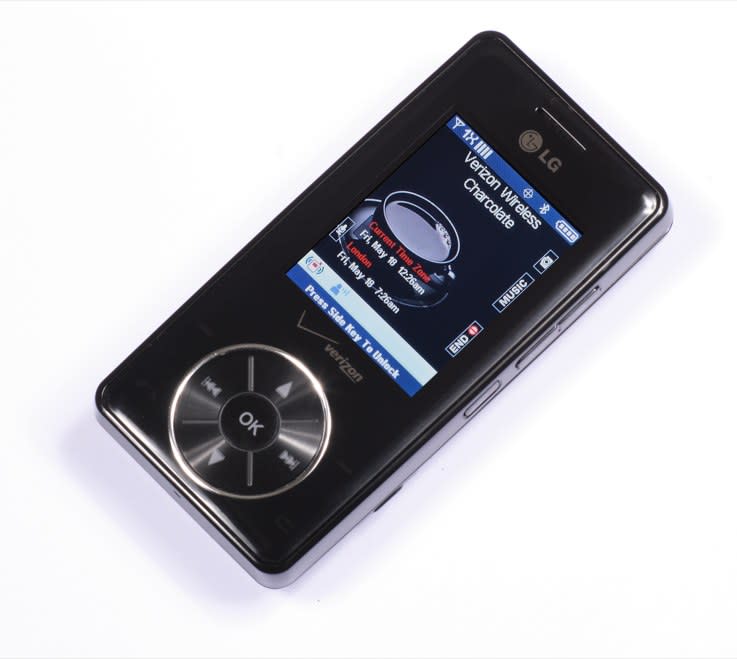
Following the Sony Ericsson W800i, LG introduced its own MP3 player–phone hybrid called the LG Chocolate in 2006. Like the RAZR, it came in multiple hues: Dark Chocolate (black), Mint Chocolate (pale green), White Chocolate (white), Strawberry Chocolate (pink), and Cherry Chocolate (red). When closed, the phone resembled a music player with a screen and a circular control panel, but the screen slid up to reveal numbered keys.
BlackBerry Pearl
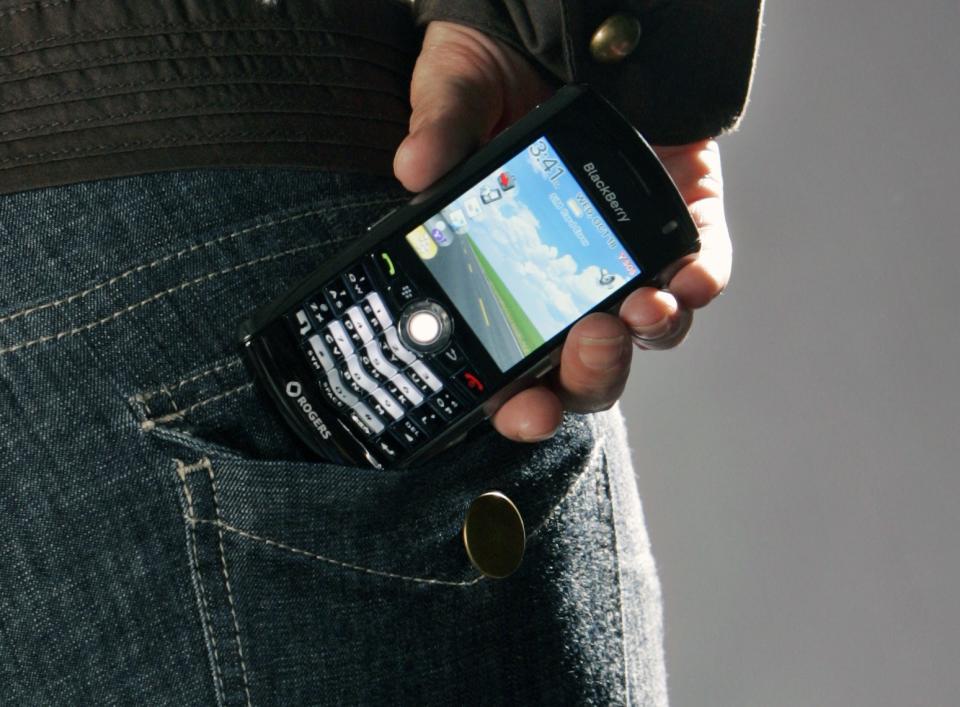
Blackberry Pearl in the studio for Top Technologies Special Section.
Photo by David Cooper. Image courtesy of Getty Images.In the 2000s, BlackBerry made the jump from a phone for businesspeople to a phone for the general public, largely due to the launch of the BlackBerry Pearl in 2006. It had a sleeker profile than its brethren, which felt more like old-school PalmPilots than cell phones, plus a modified QWERTY keyboard in which some neighboring letters shared keys. It was also the first BlackBerry device to have a camera and music player capabilities. The most revolutionary thing about the Pearl’s design, however, was the introduction of the trackball, which became a touchstone of the BlackBerry brand.
Apple iPhone
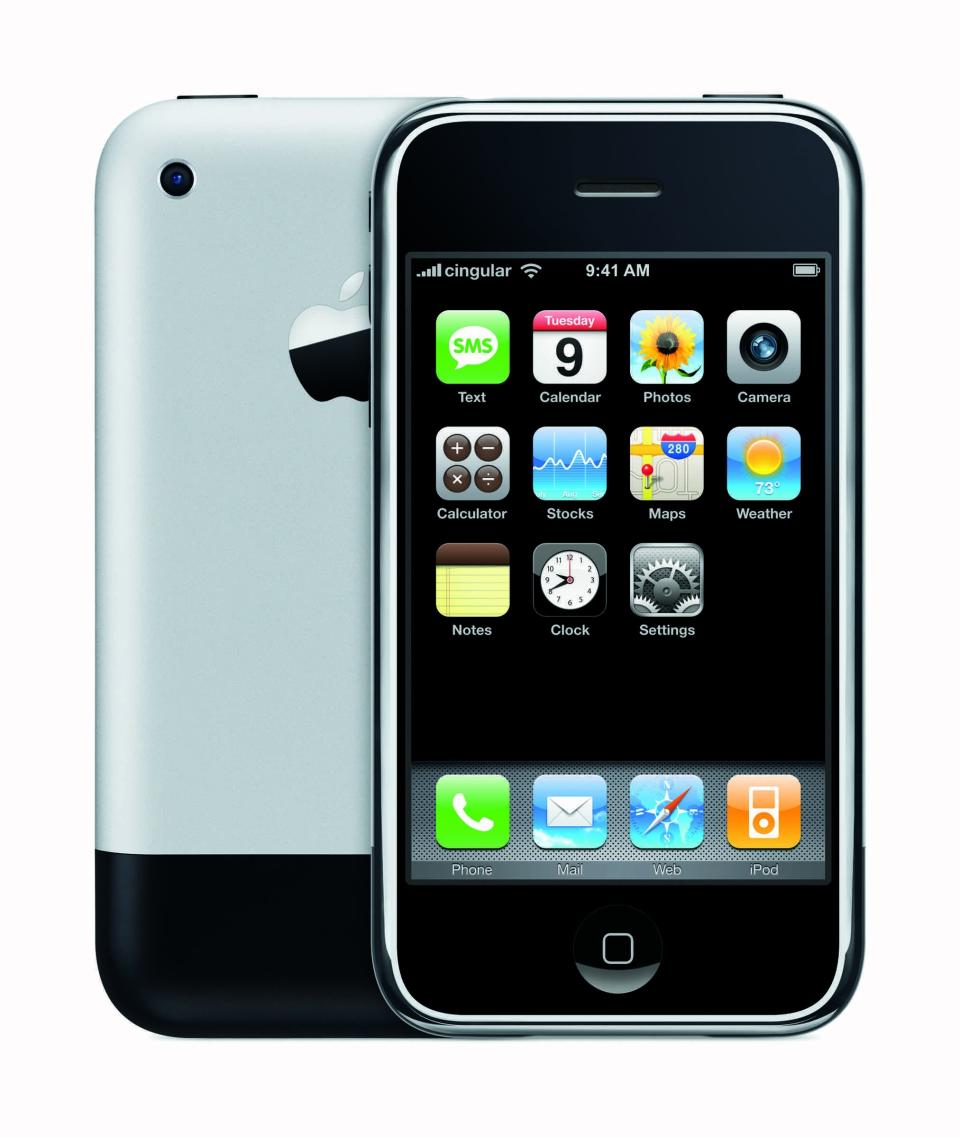
Without a doubt the most revolutionary phone of the early 2000s, the Apple iPhone was unlike any of its predecessors. From a visual design perspective, it was a rectangular, minimalist gem, featuring a sleek metal-and-glass body, a singular button, and an extremely thin profile. From a technological design perspective, the touchscreen made waves. “We’re going to use the best pointing device in the world,” said Steve Jobs in the 2007 keynote that introduced the iPhone to the world. “We’re going to use our fingers. We’re going to touch this with our fingers.” It’s true that the iPhone was not the very first touchscreen phone ever invented (the IBM Simon had a touchscreen back in 1992), but the iPhone had the most advanced technology to date. Of course, the iPhone paved the way for today’s smartphones, almost all of which mimic its minimalist, screen-oriented design.
HTC Dream/T-Mobile G1
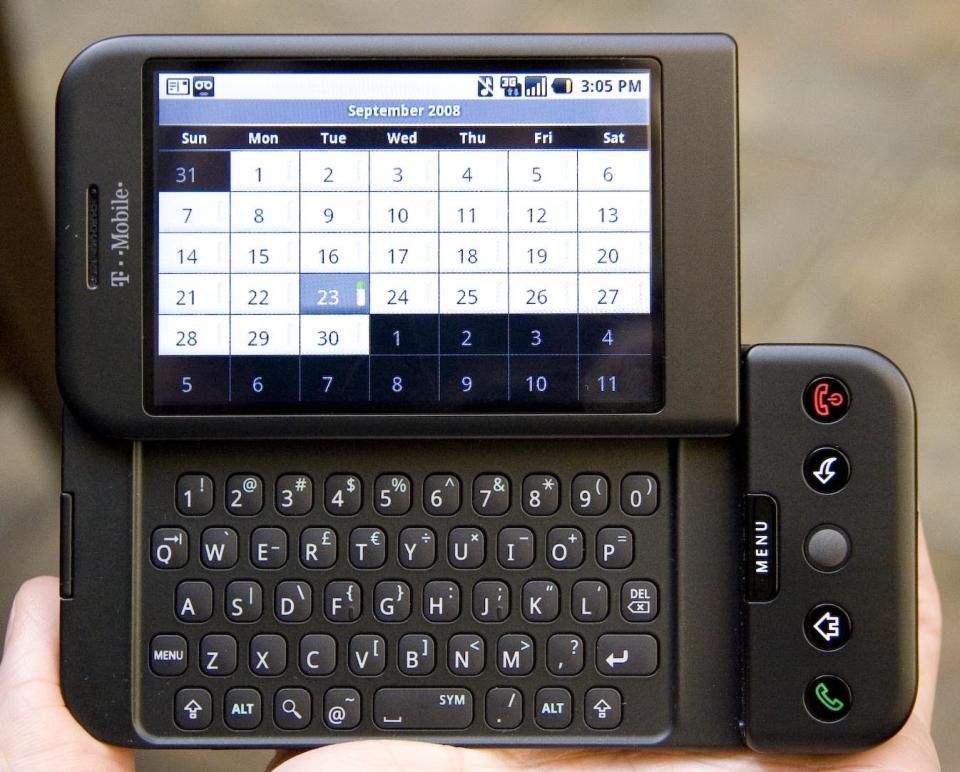
T-Mobile G1 launch event
Photo by Michael Oryl. Image courtesy of Flickr.As soon as Apple launched iPhone and iOS, its operating system, other manufacturers rushed to conjure up their own versions of the smartphone. The first phone to use Apple iOS’s main competitor, Android (developed by a consortium of developers, including Google), was the HTC Dream, which debuted in 2008 and also went by the name T-Mobile G1. Unlike the iPhone, the HTC Dream had an analog QWERTY keyboard beneath a sliding touchscreen.
Originally Appeared on Architectural Digest

